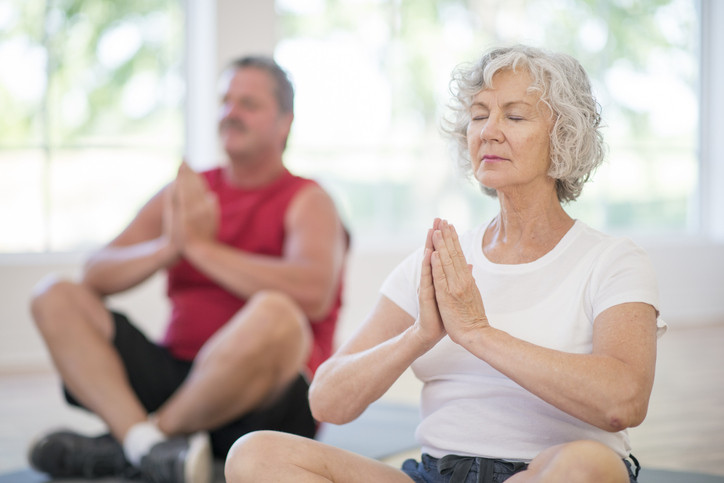Stress nowadays has become a common part of life. From work pressures to personal challenges, stress can affect both physical and mental well-being. While occasional stress can be a motivator, chronic stress takes a toll on health, reducing productivity and happiness. Incorporating mind-body techniques into your daily routine can help manage stress effectively and support recovery, aligning with your life goal of achieving balance and wellness.
How stress affects physical and mental health
Stress triggers the release of hormones like cortisol and adrenaline, which prepare the body for a “fight or flight” response. While this response is crucial for survival in short bursts, prolonged activation can lead to:
- Increased risk of heart disease and hypertension
- Weakened immune function
- Mental health challenges, such as anxiety and depression
- Impaired cognitive abilities and focus
Recognizing the impact of stress underscores the importance of adopting effective stress management techniques to safeguard your long-term well-being.
Managing stress is not just about reducing discomfort but also about promoting overall health and resilience. Mind-body techniques focus on creating harmony between the physical and mental aspects of your being, allowing you to address stress from multiple angles.
Mindfulness and Meditation
The Benefits of Mindfulness Meditation
Mindfulness meditation involves focusing your attention on the present moment without judgment. This practice has been shown to:
- Lower cortisol levels
- Improve focus and clarity
- Enhance emotional regulation
- Increase overall life satisfaction
Techniques for Mindfulness Meditation
- Body Scan Meditation: Lie down or sit comfortably and focus on each part of your body, releasing tension as you move your attention from head to toe.
- Breath Awareness: Pay attention to your breathing, noticing the rhythm and depth without trying to change it.
- Gratitude Meditation: Reflect on things you are grateful for to cultivate positive emotions.
Mindfulness Apps and Guided Meditations
Popular apps like Headspace, Calm, and Insight Timer offer guided meditations and mindfulness exercises tailored to different levels of experience and goals.
Yoga and Yoga Nidra
The Physical and Mental Benefits of Yoga
Yoga combines physical postures, controlled breathing, and meditation to promote relaxation and overall health. Benefits include:
- Increased flexibility and strength
- Reduced stress and anxiety
- Improved sleep quality
- Enhanced focus on life goals
Yoga Poses for Stress Relief
- Child’s Pose (Balasana): Calms the mind and releases tension in the lower back.
- Cat-Cow Pose (Marjaryasana-Bitilasana): Improves spinal flexibility and reduces stress.
- Legs-Up-The-Wall Pose (Viparita Karani): Encourages relaxation and improves circulation.
Yoga Nidra: A Deep Relaxation Technique
Yoga Nidra, or “yogic sleep,” is a guided relaxation practice that induces deep rest. It helps:
- Alleviate stress and fatigue
- Improve focus and mental clarity
- Restore energy levels
Incorporating supplements for recovery, such as magnesium or adaptogenic herbs, alongside yoga can enhance relaxation and expedite physical recovery.
Progressive Muscle Relaxation
How Progressive Muscle Relaxation Works
This technique involves tensing and relaxing different muscle groups in a systematic way to reduce physical tension and promote relaxation.
Step-by-Step Guide to Progressive Muscle Relaxation
- Find a quiet and comfortable space.
- Start with your toes, tensing the muscles for 5 seconds, then releasing.
- Move upward through your body, including legs, abdomen, arms, and face.
- Focus on the sensation of relaxation in each muscle group.
Practicing this regularly can help you become more aware of physical tension and learn to release it effectively.
Breathing Exercises
The Power of Deep Breathing
Deep breathing helps activate the parasympathetic nervous system, which counteracts the stress response. It:
- Lowers blood pressure
- Reduces heart rate
- Promotes a sense of calm
Different Breathing Techniques for Stress Relief
- Diaphragmatic Breathing: Breathe deeply into your diaphragm, allowing your belly to rise and fall.
- Box Breathing: Inhale for 4 counts, hold for 4 counts, exhale for 4 counts, and hold again for 4 counts.
- Alternate Nostril Breathing (Nadi Shodhana): Close one nostril while inhaling and switch nostrils while exhaling.
Incorporating Breathing Exercises into Daily Life
- Start your day with 5 minutes of deep breathing.
- Use breathing techniques during stressful moments.
- Pair breathing exercises with meditation or yoga for added benefits.
Tai Chi and Qigong
Gentle Movements for Mind and Body
Tai Chi and Qigong are ancient practices that combine slow, deliberate movements with focused breathing. These practices are excellent for stress relief and recovery.
The Benefits of Tai Chi and Qigong for Stress Reduction
- Improve balance and coordination
- Enhance mental clarity and focus
- Reduce symptoms of anxiety and depression
- Support physical relaxation and energy flow
The Role of Diet and Nutrition
Nutrient-Dense Foods for Stress Relief
A well-balanced diet rich in essential nutrients supports overall health and stress management. Key foods include:
- Leafy Greens: High in magnesium, which helps regulate cortisol levels.
- Fatty Fish: Rich in omega-3 fatty acids that reduce inflammation and improve mood.
- Whole Grains: Provide steady energy and support serotonin production.
- Nuts and Seeds: Contain magnesium, zinc, and healthy fats to combat stress.
The Impact of Diet on Mood and Energy Levels
Eating a diet high in processed foods and sugar can exacerbate stress and lead to energy crashes. Prioritizing whole, nutrient-dense foods ensures sustained energy and better mood regulation.
Mindful Eating Practices
- Eat slowly and savor each bite.
- Focus on the textures, flavors, and smells of your food.
- Avoid distractions like TV or phones during meals.
Conclusion
Mind-body techniques such as mindfulness, yoga, progressive muscle relaxation, and breathing exercises offer effective ways to manage stress and promote recovery. Coupled with practices like Tai Chi and a nutrient-rich diet, these methods support overall health and well-being. By incorporating these strategies into your routine, you can achieve your life goal of leading a balanced, stress-free life.

